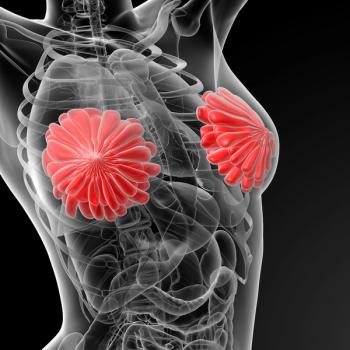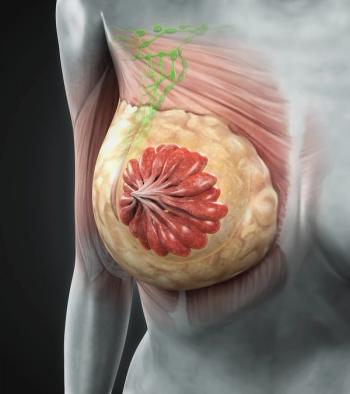
- ONCOLOGY Vol 14 No 8
- Volume 14
- Issue 8
A Phase II Randomized Study of Doxorubicin Alternated With Docetaxel vs Sequential Administration of Four Cycles of Docetaxel Followed by Four Cycles of Doxorubicin as First-Line Chemotherapy in Metastatic Breast Cancer Patients
From March 1996 to March 1998, 106 patients with untreated metastatic breast cancer (MBC) were treated with docetaxel (Taxotere) (100 mg/m²) and doxorubicin (75 mg/m²) on an alternating cycle-by-cycle (doxorubicin, docetaxel, doxorubicin, etc) or sequential (four cycles of docetaxel, then four cycles of doxorubicin) basis, every 3 weeks, for a maximum of eight cycles.
From March 1996 to March 1998, 106 patients with untreated metastatic breast cancer (MBC) were treated with docetaxel (Taxotere) (100 mg/m²) and doxorubicin (75 mg/m²) on an alternating cycle-by-cycle (doxorubicin, docetaxel, doxorubicin, etc) or sequential (four cycles of docetaxel, then four cycles of doxorubicin) basis, every 3 weeks, for a maximum of eight cycles.
Eligible patients included those with measurable MBC, less than 75 years old, with a World Health Organization (WHO) performance status (PS) of 0–2, no prior chemotherapy (CT) for MBC (prior adjuvant allowed provided < 240 mg/m² of prior doxorubicin), and adequate hematologic, renal, hepatic, and baseline left ventricular ejection fraction. Patient characteristics were well balanced: median age, 55 years (range: 29–75 years); median PS, 1 (range: 0–2). Adjuvant CT was received by 88% of patients (with anthracycline in 3 patients). Tumor characteristics for both arms (alternating/sequential) were as follows: viscera (82%/80%), liver (47%/54%), bone (39%/51%), and more than two organs (43%/40%).
The median number of cycles administered was 8 in both arms. Febrile neutropenia and grade 3 infection were observed in 18% (alternating) and 13% (sequential) of patients. With the exception of stomatitis (more frequent and more severe with alternating therapy), no other nonhematologic severe or grade 3/4 adverse events were observed. With a median follow-up time of 14 months and a median cumulative dose of 300 mg/m² of doxorubicin, no congestive heart failure was observed. Fluid retention was severe in only 1 patient. Activity was similar between alternating and sequential therapy: overall response rate, 60% (alternating)/67% (sequential); complete response, 2%/7%; liver response rate, 59%/62%; response duration, 47 wk/44 wk; time to progression, 39 wk/38 wk. As of March 1999, median survival was not yet reached in both arms.
CONCLUSION: Alternating and sequential administrations of doxorubicin and docetaxel are safe, feasible, and effective regimens. A comparison of alternating or sequential administration of doxorubicin and docetaxel with doxorubicin/docetaxel in combination is warranted.
Articles in this issue
over 25 years ago
Commentary on Abstract #280over 25 years ago
Commentary on Abstract #527over 25 years ago
Commentary on Abstracts #986 and #1015over 25 years ago
Commentary on Abstract #1916over 25 years ago
Commentary on Abstracts #341, #347, and #333over 25 years ago
Commentary on Abstracts #407 and #424over 25 years ago
Commentary on Abstracts #349 and #1259over 25 years ago
Commentary on Abstracts #317 and #322over 25 years ago
Commentary on Abstracts #254 and #330over 25 years ago
Commentary on Abstract #336Newsletter
Stay up to date on recent advances in the multidisciplinary approach to cancer.





